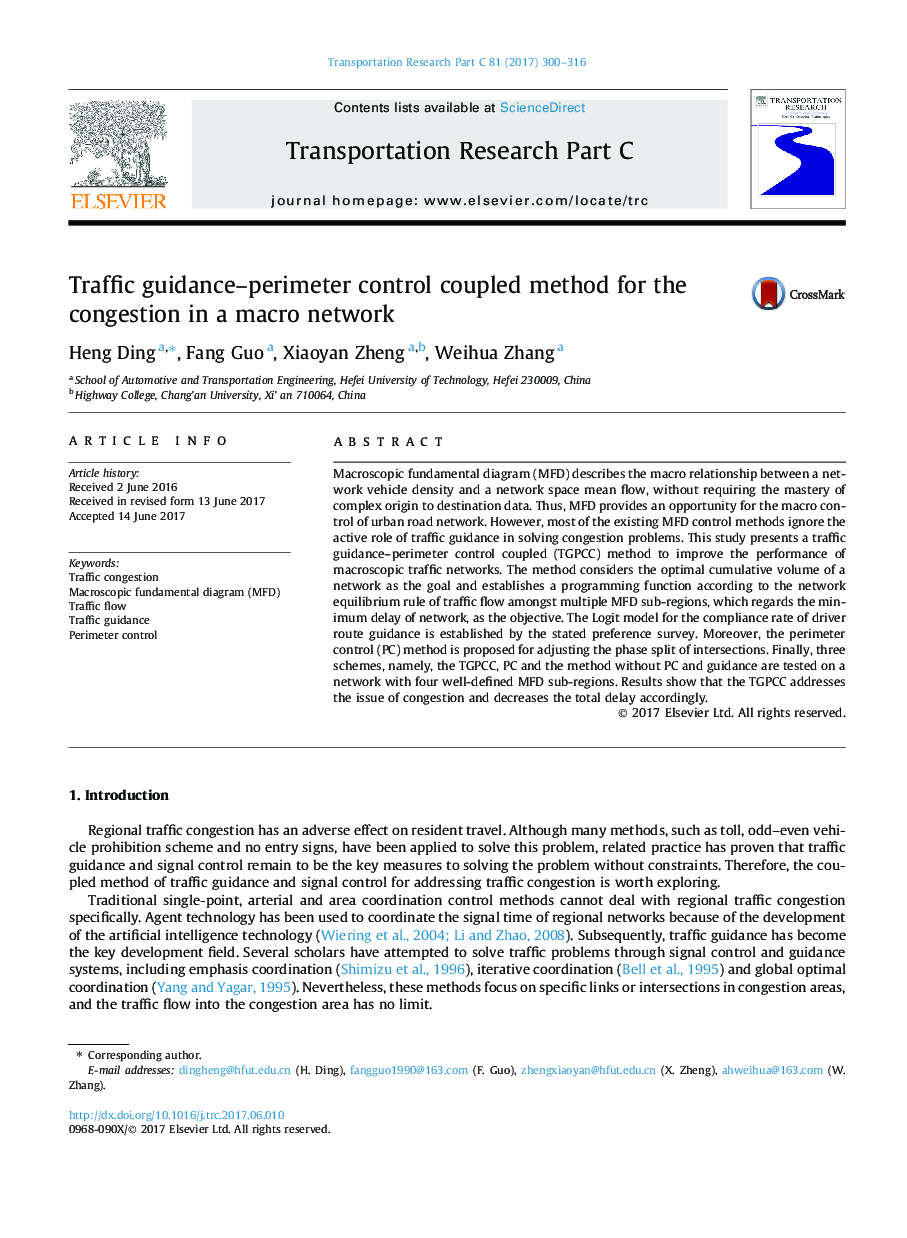| Article ID | Journal | Published Year | Pages | File Type |
|---|---|---|---|---|
| 4968416 | Transportation Research Part C: Emerging Technologies | 2017 | 17 Pages |
Abstract
Macroscopic fundamental diagram (MFD) describes the macro relationship between a network vehicle density and a network space mean flow, without requiring the mastery of complex origin to destination data. Thus, MFD provides an opportunity for the macro control of urban road network. However, most of the existing MFD control methods ignore the active role of traffic guidance in solving congestion problems. This study presents a traffic guidance-perimeter control coupled (TGPCC) method to improve the performance of macroscopic traffic networks. The method considers the optimal cumulative volume of a network as the goal and establishes a programming function according to the network equilibrium rule of traffic flow amongst multiple MFD sub-regions, which regards the minimum delay of network, as the objective. The Logit model for the compliance rate of driver route guidance is established by the stated preference survey. Moreover, the perimeter control (PC) method is proposed for adjusting the phase split of intersections. Finally, three schemes, namely, the TGPCC, PC and the method without PC and guidance are tested on a network with four well-defined MFD sub-regions. Results show that the TGPCC addresses the issue of congestion and decreases the total delay accordingly.
Related Topics
Physical Sciences and Engineering
Computer Science
Computer Science Applications
Authors
Heng Ding, Fang Guo, Xiaoyan Zheng, Weihua Zhang,
